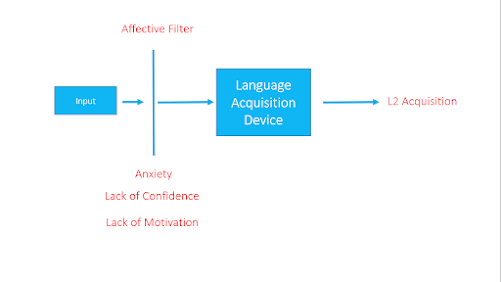Understanding IPM (Information Processing Model) in a Practical Context

Affective filter is one of the IPM (Information Processing Model) elements proposed by Stephen Krashen. The input hypothesis proposed by him include five features: acquisition-learning, natural order, monitor, comprehensible input, and affective filter. This writing is, however, mainly focused on the affective filter point. My students, who are studying English as a second language, inspired me to recall this point and I see the importance of introducing this idea to them. One of their questions was concerned about the language learning barrier, or the contributing factors to why language learning does not take place. It is understandable since the language learning assessment was done as their self-reflection to their language learning achievement. When I asked them "How good you are at listening, speaking, reading, and writing". Their responses indeed vary. One is good at listening, reading, writing, and speaking. But none of them claimed that they are competent in those f

